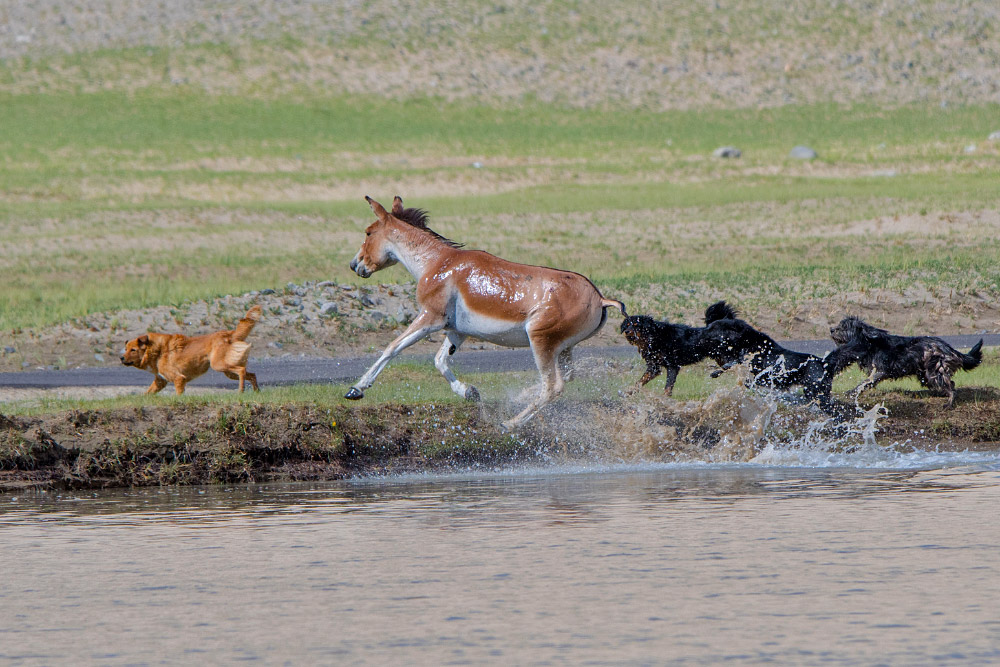 "
"
While on a birding tour to Ladakh in July 2016, I was heading further east from Pangong Tso, crossing the Chushul plains. I stopped to get the permits checked at the Loma ITBP check-post. While waiting there, a Kiyang entering the river grabbed my attention. I waited and watched as I had never seen them doing that. To my surprise, it started swimming to go across. Meanwhile, it had also caught the attention of a pack of dogs, which had just started barking at it.
The Wild Ass fumbled in the middle of the river for a while and later still kept moving towards the pack. With a bit of agility the Kiyang managed to tackle the pack of dogs at the bank and ran away. There was another Kiyang witnessing this incident and waiting at the other bank to follow the same route, and the pack of dogs patiently waited for it to come to the bank before they launched their attack. They chased it to a hill but failed to match up to its speed, stamina and bite.
Over the years, I’ve witnessed several such incidences of predatory behaviour among feral / domesticated dogs in Ladakh. I’ve seen dogs also ambushing and chasing bharal, argali and woolly hare across cliffs.
In agreement with my speculation, some of the locals I’ve discussed this with aver that incorrect disposal of garbage or leftover food from villages and especially army camps, is at the root of the feral dog problem. Army camps attract dogs to remote places, which are rich in wildlife. The dogs thrive here, often leading to conflict with endangered wildlife. This is a major cause for worry and needs to be tackled.
As Conservation India has highlighted repeatedly in the past domestic / feral dogs pose a huge threat to wildlife populations. Here is a list of similar articles / images on this issue.

 CI is a non-profit, non-commercial portal that aims to facilitate wildlife and nature conservation by providing reliable information and the tools needed to campaign effectively.
CI is a non-profit, non-commercial portal that aims to facilitate wildlife and nature conservation by providing reliable information and the tools needed to campaign effectively.
Chosen as 'Picture of the Week'
Feral dogs thrive in remote areas of Ladakh thanks to incorrect disposal of garbage by villages and army camps. These dogs pose a severe threat to the endangered wildlife of the region. Tackling the garbage problem is key to reducing the feral dog menace.